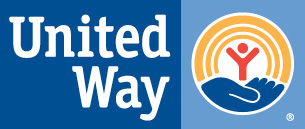News
Create a stimulus money stability plan
March 11, 2021:
Congress just passed a $1.9 trillion emergency relief package, which seeks to help millions of Americans survive this economic and health crisis. Individuals earning up to $75,000 will receive $1,400 and couples earning under $150,000 will receive $2,800. Benefits start to phase out above $75,000 for single filers (with a hard cut-off at $80,000) and $150,000 for married filers (with a hard cut-off of $160,000). People with children will receive an additional $1,400 per child.
If you have not received your payment yet, use the IRS Get My Payment resource to find out when you can expect your payment to arrive.
Stimulus Money Stability Plan
When you get your payment, what should you do? The answer will be different for everyone. To help you make smart decisions that will support you now and in the future, we have created this Stimulus Money Stability Plan.
Step 1: Pay critical expenses
Pay regular bills, buy food and pay rent or a mortgage first. It is important to take care of these essential parts of life before other financial commitments.
Help with regular expenses:
If you are in need of assistance, reach out to:
211 – This vital service provides caring, expert help in our community. Members of the 211 team can provide assistance with utilities, affordable housing and rent, transportation, and food as well as many other services. Call 211 or 1-800-346-2211 or visit the 211 website
Food Bank of the Southern Tier – If you are in need of food for your family, check out the Food Finder section of the Food Bank of the Southern Tier website.
Step 2: Pay your taxes
If you have not paid your taxes and believe you will owe money, you could use your stimulus money to cover part or all of your payment.
Help with taxes:
In partnership with Tax Slayer, United Way offers every household with a simple return the opportunity to file their taxes for free through MyFreeTaxes.
Step 3: Pay down your debt
Making a significant payment on a credit card or loan that has an outstanding balance will help reduce the interest paid on the account, allowing you to keep more of your money in the future. Before making a payment, check with the company that holds your debt, as many organizations are offering crisis relief such as deferred payments or waived interest.
Step 4: Start or add to an emergency fund
Most experts recommend having enough money in your emergency fund to cover three to six months of expenses. Your stimulus money will likely not fully cover that amount, but it can be a starting point or a way to boost what you are already doing.
Step 5: Support causes or local businesses
If you are fortunate enough to have the above steps covered or have money remaining after taking steps one through four, you could use your stimulus payment to help people in need. Even as our economy begins to open, local businesses continue to struggle. While it’s convenient to shop online, using your stimulus money to purchase items from local stores, many of which are offering gift cards or no-contact sales and pick-up, can help ensure small businesses are able to fully open down the road.
Additionally, individuals and families continue to face challenges such as wage loss, rent assistance, and not having enough food. There are many nonprofits in our area supporting local people, including United Way of the Southern Tier. Find out more about what we are doing.
Step 6: Make long-term investments
One final way to make the most out of stimulus money is to invest it. If you have children, opening a 529 plan to save for their college education can be a sound investment. Opening or contributing to an individual retirement account (IRA) or other retirement accounts are also good options.
Find other information to help you feel financially secure at MySmartMoney









